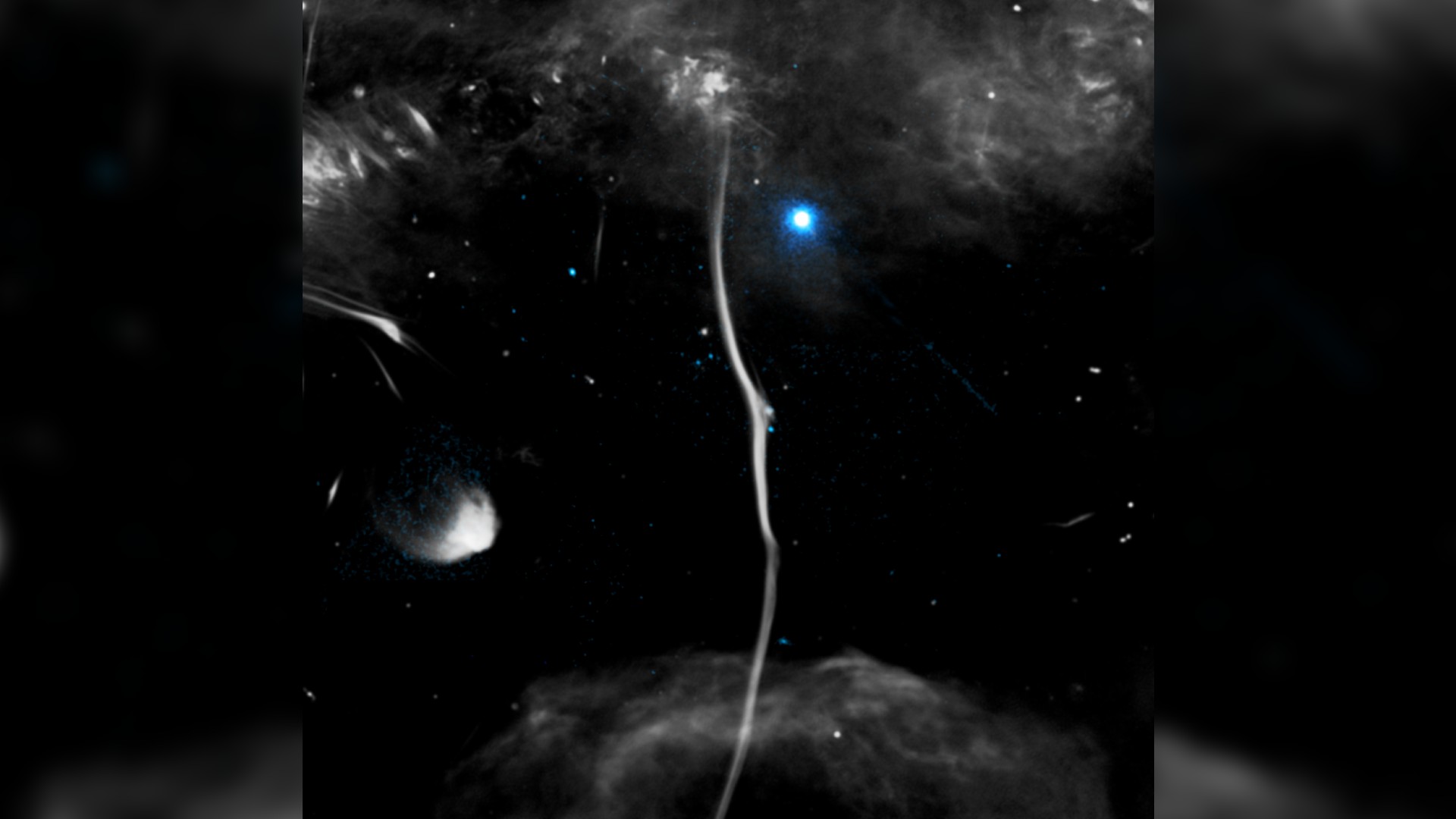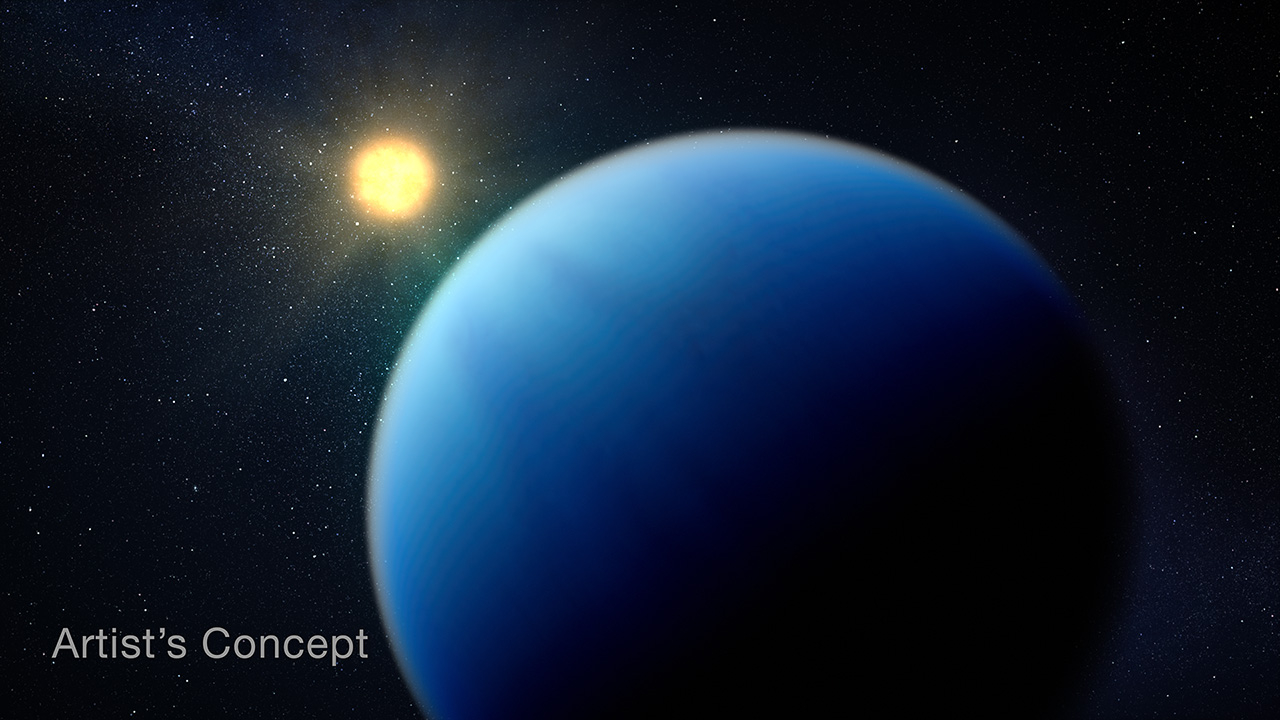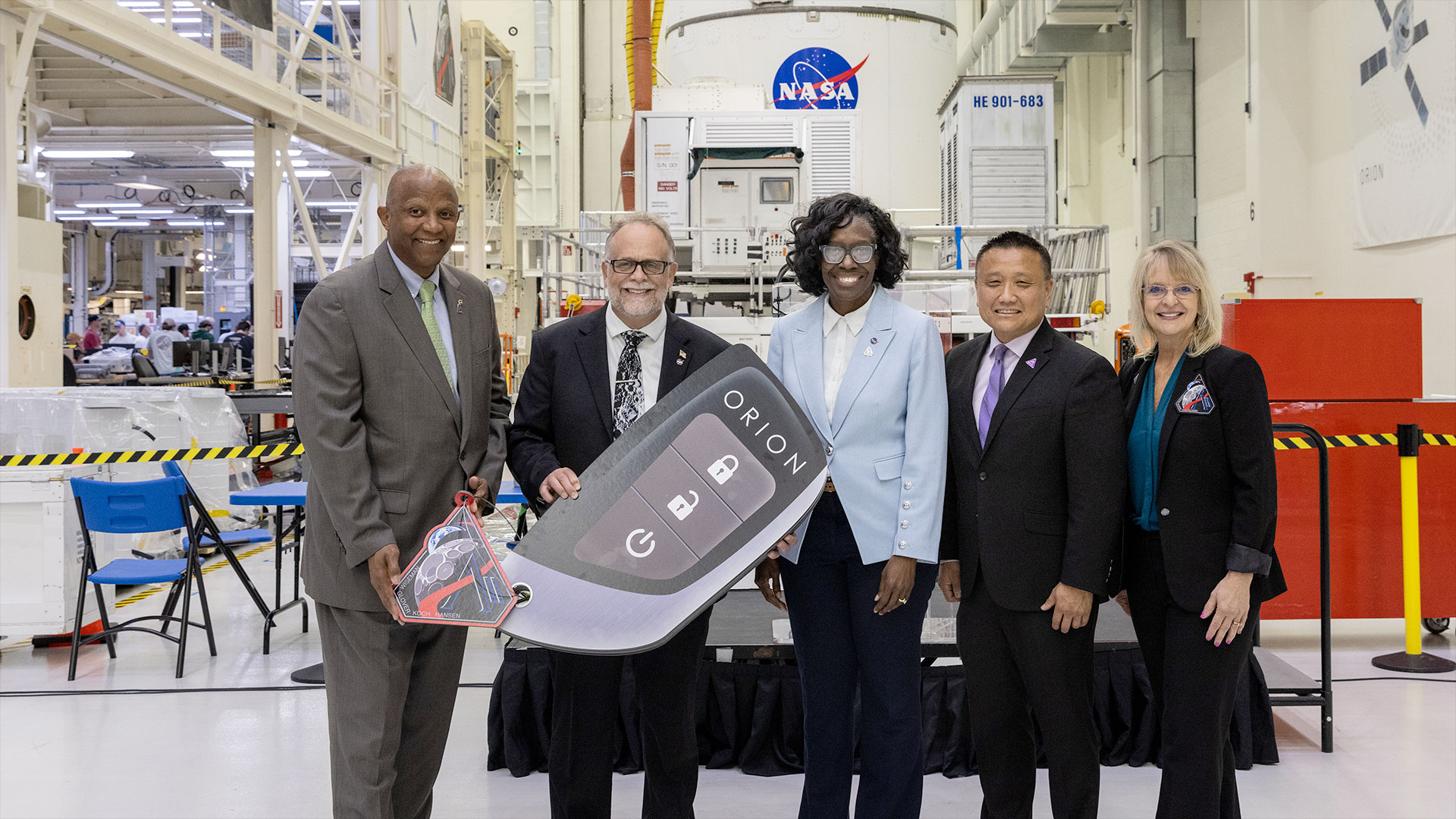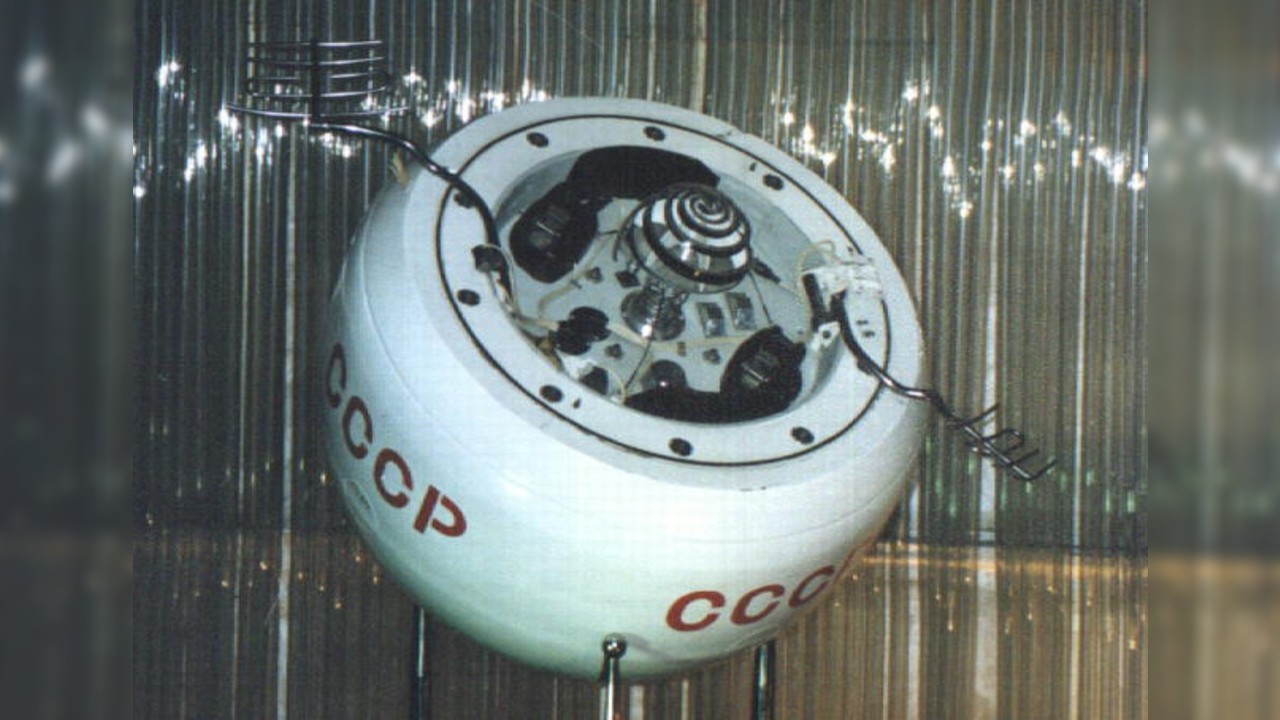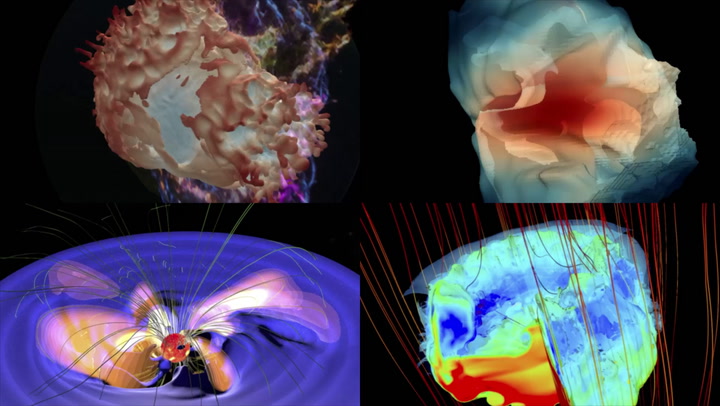Black Holes Pair Up For Double Whammy
This story was updated at 11:14 a.m. ET.
WASHINGTON — What's worse than one giant black hole waiting to swallow up everything nearby? Try two supermassive black holes packing a galactic double whammy.
A team of astronomers recently discovered 33 sets of double black holes in distant galaxies. Though these black hole pairs had been predicted theoretically, only a handful had been observed so far.
"[The findings] show that dual supermassive black hole systems are much more common than previously known from observations," said researcher Julia Comerford, an astrophysicist at the University of California, Berkeley.
Comerford presented the discovery Monday at the 215th meeting of the American Astronomical Society in Washington, D.C.
Scientists think that most galaxies, including our own Milky Way, host supermassive black holes lurking at their centers. So pairs of giant black holes are thought to result when two galaxies collide and merge together. Each galaxy's black hole would gradually spiral in toward the center of the newly created fusion galaxy and orbit around each other in a pair.
In fact, this fate is predicted for the supermassive black hole inside our own galaxy. The Milky Way is headed toward an eventual collision with the neighboring Andromeda galaxy, and their two black holes will likely join in just this way.
Get the Space.com Newsletter
Breaking space news, the latest updates on rocket launches, skywatching events and more!
Most of the newly discovered pairs were found through the DEEP2 Galaxy Redshift Survey, a survey of 50,000 galaxies observed with the Deep Imaging Multi-Object Spectrograph on the 10-meter (400-inch) Keck II Telescope atop Mauna Kea in Hawaii.
The astronomers detected their pairs by noting their relative motion to each other. When something moves away from an observer, its light appears redder, or red-shifted (this shift in wavelength is known as the Doppler effect). And when an object moves toward an observer, its light appears bluer.
So the researchers measured the relative velocities of apparent black holes inside distant galaxies and found some sets that appeared to be very close to each other — about 3,000 light-years apart, or one-eighth the distance from the sun to the center of the Milky Way — indicating they were dual black holes.
Ultimately, these pairs are predicted to drift even closer, eventually becoming gravitationally-bound binary black holes, and then finally colliding to form a single, humongous black hole.
Since dual black holes result from galaxy mergers, the findings could help scientists estimate how often galaxies collide.
The researchers estimated that among the galaxies in their sample, which are particularly far away, each galaxy should collide with another galaxy about three times every billion years.
"This merger rate is in agreement with other methods," Comerford said. "The important thing about using these to estimate the merger rate is it's a completely independent means."
Join our Space Forums to keep talking space on the latest missions, night sky and more! And if you have a news tip, correction or comment, let us know at: community@space.com.

Clara Moskowitz is a science and space writer who joined the Space.com team in 2008 and served as Assistant Managing Editor from 2011 to 2013. Clara has a bachelor's degree in astronomy and physics from Wesleyan University, and a graduate certificate in science writing from the University of California, Santa Cruz. She covers everything from astronomy to human spaceflight and once aced a NASTAR suborbital spaceflight training program for space missions. Clara is currently Associate Editor of Scientific American. To see her latest project is, follow Clara on Twitter.


